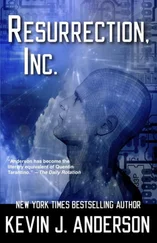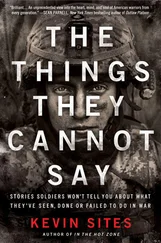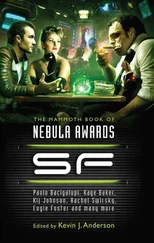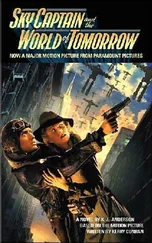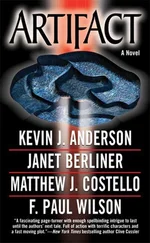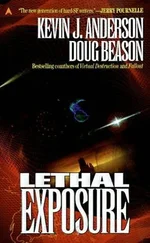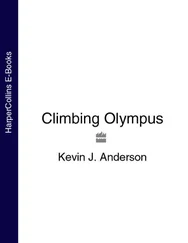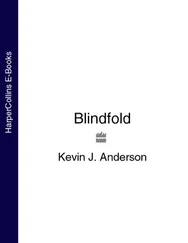After opening her art gallery, exhibiting the work of local Indian artists, she had decided just to live her life and let the world go on by itself. History had chosen a different path, and it had to proceed where it would go, without any help, or interference, from her.
She would watch the future happen, while she lived in the past. Do what you have to do. If things got too bad, she would have to step in again and try to change things. And damn the consequences. For someone.
Afterword
THE TRINITY PARADOX ORIGINS
Doug Beason
I think it was Kevin who came up with the idea of writing an alternate history of the Manhattan project. And it all seemed natural at the time, the thing everyone expected us to do. After all, we’d met back in ’85 at a nuclear weapons laboratory, and we’d both had experience at Los Alamos National Laboratory—birthplace of the atomic bomb—and we’d both been out to the Nevada Nuclear Test Site: Kevin as a technical writer, and myself as a researcher.
Writing Trinity was not only personally and professionally interesting for us, but it made extensive use of our training and education. In fact this had become somewhat of a trademark for us: we both knew and understood our writing because we were not only active in the field, but we were publishing and making technical advances in it as well. This became an attribute of our collaborations: inserting real life experience and knowledge into our work. Other projects, such as our short story “Reflections in a Magnetic Mirror,” and novels such as Ill Wind, Ignition, Lifeline , the Nebula-nominated Assemblers of Infinity , and the Craig Kreident SF-mystery series ( Virtual Destruction, Fallout, and Lethal Exposure ), all made use of our scientific backgrounds.
What made writing Trinity even more exhilarating was that Kevin was a fanatic for historical detail, and as a computational physicist, I was fascinated by the science pioneered at war-time Los Alamos. I had performed my PhD thesis on the Los Alamos supercomputers, and Kevin had orchestrated some complex technical publications at the lab, as well as spent weekends touring the once highly secretive complex, and hiking throughout Bandelier National Park and the Anasazi ruins.
Writing Trinity started as a typical brainstorming session for us. We were eating either pizza or grilling steaks—a great way to fuel the creative juices—and whoever wasn’t cooking was taking notes. The concept grew into about five pages when we decided to start chopping it up logically and laying out the different plot lines.
The idea was that an extremely bright, and blindingly passionate female anti-nuclear protestor would somehow be transported back to the origins of the Manhattan project, in the middle of wartime America. This allowed us to explore the question of whether her foreknowledge of history would change the outcome of inventing the bomb… or WWII? And would her views change when she was suddenly immersed in this frantic, all-out effort to save 1940s America?
Writing the novel was one of the most fun collaborative experiences I’ve had. For example, one morning we wrote synopsis of major scenes onto sheets of paper. That afternoon (after a hike up the Sandia mountains in Albuquerque) Kevin and I laid the paper all over my living room floor, rearranging them while we mapped out the plot. My wife kept our toddlers out of the way while Kevin and I unscrambled plot lines, added and subtracted chapters, and finally achieved a holistic, visual view of the novel.
The story naturally divided itself along two lines: the German nuclear effort, and the US/UK Los Alamos secret program to produce the “device” (what the atomic bomb was called at the time).
Kevin and I divided the writing duties equitably. “You take that character and I’ll take this one.” Or, “I’ll write this chapter if you want to write the next one.” After the first draft was finished, whoever wanted to take the first cut at re-writing the entire novel had carte-blanche to change anything he wanted—words, sentences, scenes, structure, plot, whatever. And that, I think, was the strength of our collaboration. It was like taking our own work (but yet weirdly different because we had not written all of it) and rewriting it as our own. It took awhile to get into this mode of editing, but that gave the novel a single voice, and gave us the freedom to produce something that was much greater than simply slapping two pieces of disparate text together.
For this collaboration, the process of figuring out “who wrote what” fell naturally along our areas of interest. Kevin may not have literally jumped up and shouted that he wanted to write the German part of the novel, but he did everything but that. And I assume that I did the same for writing the US part. One anecdote I fondly remember was about the innovative way that we fictionally killed off Edward Teller, father of the H-Bomb. I actually truly admired Dr. Teller, and years later, he nodded his head in amusement when I told him I’d committed literary homicide in Kevin and my critically acclaimed book.
The Trinity Paradox was a culmination of our diverse experiences, a fusion of mutual interests. At the time we wrote the novel, it had been fifty years since the Manhattan project had occurred when we wrote Trinity in 1991, and that monumental event was quickly fading from memory. By contrast today, the Beatles first appeared on the international scene some fifty years ago, and look at how many people are still swept up by that creative explosion… equivalent in cultural change, if not in energetic force, to the impact made by wartime Los Alamos. We just wanted to ensure that perspective was not forgotten.
Look for these and other digital works by Kevin J. Anderson:
RESURRECTION, INC.
In the future, the dead walk the streets—Resurrection, Inc. found a profitable way to do it. A microprocessor brain, synthetic heart, artificial blood, and a fresh corpse can return as a Servant for anyone with the price. Trained to obey any command, Servants have no minds of their own, no memories of their past lives.
Supposedly.
Then came Danal. He was murdered, a sacrifice from the ever-growing cult of neo-Satanists who sought heaven in the depths of hell. But as a Servant, Danal began to remember. He learned who had killed him, who he was, and what Resurrection, Inc. had in mind for the human race.
CLIMBING OLYMPUS
They were prisoners, exiles, pawns of a corrupt government. Now they are Dr. Rachel Dycek’s adin , surgically transformed beings who can survive new lives on the surface of Mars. But they are still exiles, unable ever again to breathe Earth’s air. And they are still pawns.
For the adin exist to terraform Mars for human colonists, not for themselves. Creating a new Earth, they will destroy their world, killed by their own success. Desperate, adin leader Boris Tiban launches a suicide campaign to sabotage the Mars Project, knowing his people will perish in a glorious, doomed campaign of mayhem—unless embattled, bitter Rachel Dycek can find a miracle to save both the Mars Project and the race she created.
“Drumbeats”
A chilling story cowritten with Rush drummer and lyricist Neil Peart. A rock drummer bicycling through the African wilderness encounters a village that makes very special drums. This one will make your heart skip a beat.
BLINDFOLD
Atlas is a struggling colony on an untamable world, a fragile society held together by the Truthsayers. Parentless, trained from birth as the sole users of Veritas, a telepathy virus that lets them read the souls of the guilty. Truthsayers are Justice—infallible, beyond appeal.
Читать дальше

